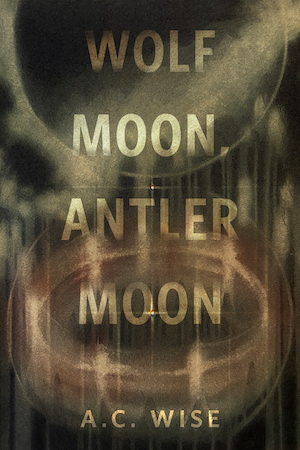Since I’m not only a passionate fan of both George R.R. Martin’s powerful A Song of Ice and Fire and HBO’s remarkable Game of Thrones television series, but also a historian of the Middle Ages and of medieval military warfare in particular, I found myself watching with much interest the HBO special The Real History Behind Game of Thrones, which is on the final disc of the Season 5 collection. It’s a terrific special, featuring both Martin and the show’s producers but also a few excellent historians for color commentary.
Anyway, along the way one of the historians made the claim that Daenerys Targaryen is based upon Cleopatra. Since my novel The Shards of Heaven features the Egyptian queen as a character, I confess that the notion of using her in literature resonates with me.
But how well does she fit here? Is the Mother of Dragons the Pharaoh in disguise?
Let’s look first at the most obvious ties that bind them:
1. They are unusually powerful women for their time.
The ancient world had a number of very fascinating women. The same is true for Martin’s Westeros. But by any measure we have to concede that women who hold the political weight of Cleopatra and Daenerys are (inequitably and tragically) few and far between. These characters would be remarkable in any age, but they are all the more so when set against the backdrop of their contemporary patriarchies.
2. They are foreign rulers.
The Targaryens are outsiders to both Westeros and Meereen (anywhere outside the Doom). They are a foreign power.
And so was the family of Cleopatra, who are descended from Ptolemy I Soter (367-282 BCE), a Macedonian general in the army of Alexander the Great. After Alexander’s death, Ptolemy was given rulership of Egypt, which Alexander had conquered. Ptolemy worked hard to establish himself and his descendants as Egyptian pharaohs, but they were nevertheless quite Macedonian in origin.
3. They come from lines of incest.
Beginning with Ptolemy I Soter’s son, the Ptolemaic pharaohs emulated Egyptian custom in, among other things, often marrying their siblings in order to keep their (newly) royal bloodline pure. By Cleopatra’s time, this meant marriage to her younger brother, Ptolemy XIII.
The Targaryens, too, often practice sibling incest: though he marries Daenerys off to Khal Drogo in order to procure military capital, it is clear that her brother Viserys had quite a bit more than familial love for his sister.
4. Neither woman liked her brother/lover.
We all know Dany’s feelings about Viserys. And I can tell you that Cleopatra didn’t get along really well with her brother/husband, either: three years after their father died, Ptolemy XIII tried to depose Cleopatra and Egypt descended into a civil war that only ended with the intervention of Rome.
5. Each brother died by drowning due to a more powerful lover.
Cleopatra allied herself with Julius Caesar, becoming his lover. Together, they fought back against the forces of Ptolemy XIII, who in 47 BCE drowned during the Battle of the Nile.
And Viserys… well, Khal Drogo gave him all the gold he could handle. As it happens, this makes Khal Drogo a kind of Julius Caesar, with its own interesting set of ramifications. But I digress…
5. They had passionate relationships with powerful men.
Khal Drogo.
Julius Caesar.
Yeah.
6. They were both known for their beauty as well as their brains.
Later Roman historians seemed to take delight in diminishing Cleopatra to a kind of seductress. While there is no doubt that she was indeed believed to be quite beautiful by her contemporaries, she was also just as clearly an extraordinarily capable ruler with an agile mind and a sharp wit. She was hardly just a pretty face.
Daenerys, too, is often misjudged by her beauty alone. Yet the more we see of her, the more we come to realize her enormous range of gifts.
7. They were both associated with pyramids.
Well, duh.
8. They both had four(ish) children.
Okay, I’m really reaching for things here. Daenerys is the mother of dragons, as we all know: three totally awesome dragons who are hatched from the fire that ought to have killed her. But don’t forget that she also had a still-born child by Khal Drogo right before that dramatic death and rebirth.
As for Cleopatra, she had three children by Mark Antony: the twins Alexander Helios and Cleopatra Selene, plus a younger boy, Ptolemy Philadelphus. In addition, she had a much older son from her relationship with Julius Caesar. His name was Caesarion, and he disappears from the historical record around the time of his mother’s death (which makes him great fodder for my novels!).
Conclusions
I’ve written elsewhere about how Martin’s novels work like a kind of “Greatest Hits” album of history: real events and characters are cut and spliced together with a bit of fantastical magic (rather like making a Mountain, as it happens) into brilliantly new things.
So it is, too, with Daenerys. She is indeed Cleopatra. But she’s also (so far) following a path not unlike Henry Tudor, whose defeat of Richard III at Bosworth Field at last put an end to the Wars of the Roses on which the Game of Thrones is so fundamentally based.
With George R. R. Martin, inspiration is never just one thing, and that’s what makes his work so utterly fascinating to us all.
 Michael Livingston is a Professor of Medieval Literature at The Citadel who has written extensively both on medieval history and on modern medievalism. The Gates of Hell, the follow-up to The Shards of Heaven, his historical fantasy series set in Ancient Rome, comes out this fall from Tor Books.
Michael Livingston is a Professor of Medieval Literature at The Citadel who has written extensively both on medieval history and on modern medievalism. The Gates of Hell, the follow-up to The Shards of Heaven, his historical fantasy series set in Ancient Rome, comes out this fall from Tor Books.










